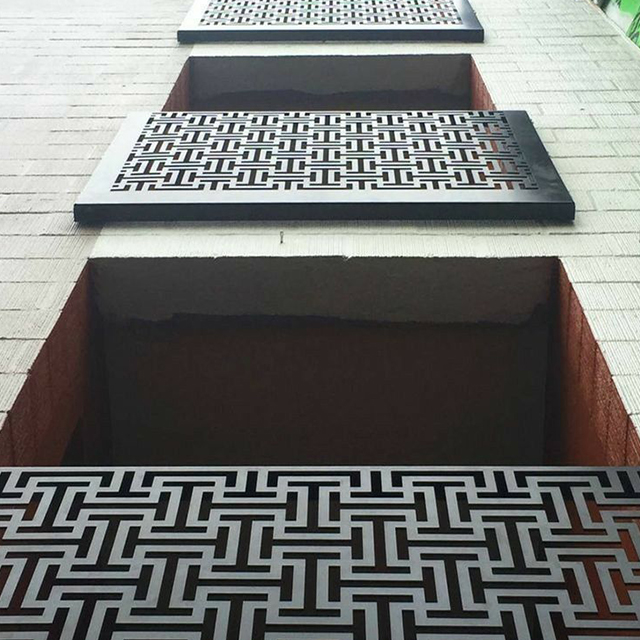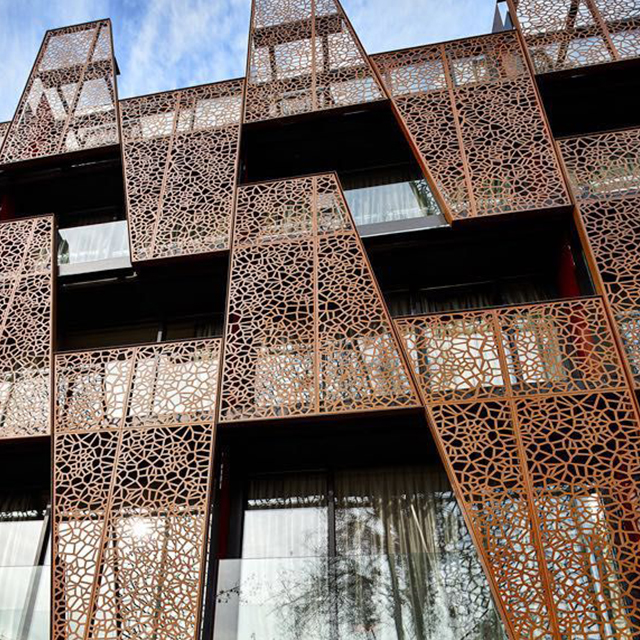In the realm of modern architecture, aluminum veneer storefront walls have emerged as a defining feature of commercial and retail spaces, providing a welcoming entryway and showcasing the products or services offered within. Aluminum veneer, with its exceptional aesthetic appeal, durability, and versatility, has become a frontrunner in cladding storefront walls, establishing a symbiotic relationship that enhances both the functionality and visual impact of these structures.
Delving into the Essence of Storefront Walls
Storefront walls, also known as curtain walls, serve as the non-structural exterior walls of commercial and retail buildings, typically composed of frames, infill panels, and supporting elements. They play a crucial role in defining the building’s façade, attracting customers, and establishing the brand identity of the business.

Unveiling the Allure of Aluminum Veneer
Aluminum veneer, composed of thin sheets of aluminum that have been treated and finished, has captivated architects, engineers, and building owners alike with its multifaceted advantages:
- Aesthetics: Aluminum veneer offers a vast array of aesthetic options, with a wide range of colors, finishes, and textures to complement diverse architectural styles. Its versatility allows for the creation of visually striking and unique facades that align with the overall design aesthetic of the building.
- Durability: Aluminum veneer is renowned for its exceptional durability, withstanding harsh weather conditions, corrosion, and UV radiation. This resilience translates into long-lasting facades that require minimal maintenance, ensuring the storefront wall retains its aesthetic appeal for years to come.
- Lightweight Construction: Aluminum is one of the lightest metals commonly used in construction, making aluminum veneer panels significantly lighter than traditional materials like brick or concrete. This lightweight construction reduces the overall weight of the storefront wall, minimizing structural requirements and potentially leading to cost savings in foundation and framing.
- Versatility: Aluminum veneer can be easily shaped and molded into various forms, allowing for intricate designs, curved surfaces, and creative architectural expressions. This versatility enables architects to transform storefront walls into captivating design elements that enhance the building’s visual appeal.
- Cost-Effectiveness: Aluminum veneer offers a compelling combination of upfront and long-term cost savings. Its durability minimizes the need for frequent repairs and replacements, reducing overall maintenance costs. Additionally, the lightweight nature of aluminum can lead to cost savings in structural support and framing.
The Symbiotic Relationship: Aluminum Veneer and Storefront Walls
The integration of aluminum veneer into storefront wall design fosters a symbiotic relationship that elevates the functionality and aesthetics of these structures:
- Enhanced Durability: Aluminum veneer’s exceptional resistance to weather, corrosion, and UV radiation safeguards the storefront wall’s structural integrity and extends its lifespan. This protection minimizes the need for repairs and replacements, reducing maintenance costs and ensuring the storefront wall remains visually appealing for years to come.
- Aesthetic Excellence: Aluminum veneer’s vast array of colors, finishes, and textures empowers architects to create visually striking and unique storefront walls that align with the overall architectural style of the building. This aesthetic flexibility allows for the creation of facades that attract attention, enhance brand identity, and establish a welcoming ambiance for customers.
- Design Versatility: Aluminum veneer’s malleability and adaptability enable the creation of intricate designs, curved surfaces, and creative architectural expressions. This design freedom allows architects to transform storefront walls into captivating design elements that complement the building’s overall aesthetic and showcase the brand’s unique identity.
- Cost-Effective Solution: Aluminum veneer’s lightweight nature and long lifespan contribute to its cost-effectiveness. The reduced weight minimizes structural requirements, potentially leading to savings in foundation and framing costs. Additionally, its durability minimizes the need for frequent repairs and replacements, further reducing long-term maintenance expenses.
Applications of Aluminum Veneer in Storefront Walls
Aluminum veneer’s versatility extends to its diverse applications in storefront wall design:
- Retail Stores: Aluminum veneer is widely used in retail store facades, creating visually appealing and durable exteriors that attract customers and enhance brand identity.
- Commercial Buildings: Aluminum panels are a popular choice for commercial buildings, such as offices and restaurants, providing a modern and professional aesthetic that aligns with the overall design of the structure.
- Entertainment Venues: Aluminum veneer’s versatility is showcased in entertainment venues, such as theaters and concert halls, where it can be used to create dynamic and eye-catching facades.
- Educational Institutions: Aluminum panels can be effectively employed in educational institutions, offering a balance of durability, aesthetics, and cost-effectiveness.
Conclusion
Aluminum veneer and storefront walls have established a symbiotic relationship that redefines the aesthetics, functionality, and cost-effectiveness of commercial and retail spaces. Aluminum veneer’s exceptional durability, aesthetic versatility, and lightweight construction, coupled






